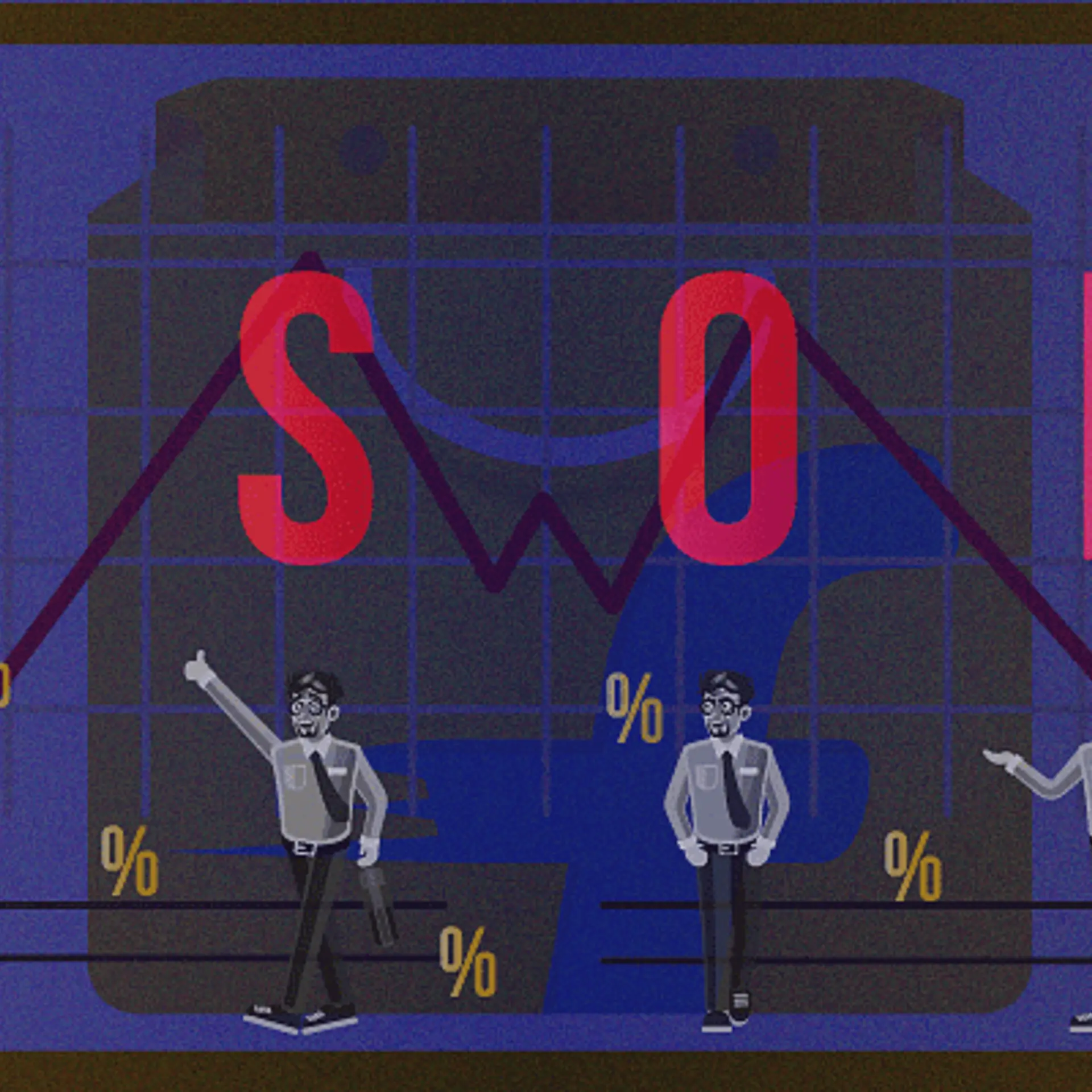Value of a neutral mediator to overcome barriers to negotiations
Parties in negotiation often have a lot of common interests, which makes the negotiation attractive; and differing interests, which creates tensions. A neutral mediator plays a valuable role in a negotiation by helping the parties navigate these differing interests that create tension.

In October 2013, Time Warner reported its largest loss of television subscribers. This was attributed to a negotiation impasse between the television network CBS and Time Warner over fees owed to CBS, resulting in Time Warner blocking CBS out of millions of homes in New York, Los Angeles and Dallas for a month.
A mediator is, usually, an active participant in the negotiation between two or multiple parties, but with a difference. The mediator is usually an expert in the process of negotiation, and helps parties navigate obstacles such as cognitive biases and other barriers that stall effective outcomes in a negotiation.
The mediator
While it is the negotiating parties that determine the outcome of the negotiations, it is the mediator who manages and supports the negotiation process and helps parties reach better agreements.
This is usually because the mediator has no vested interests in the content of the outcome. He/she builds trust with the parties, and receives incredible information from all negotiating parties including their underlying needs, interests, goals and priorities, which greatly supports a constructive negotiation process.
As a result of understanding the perspectives, underlying needs, interests and goals of both sides, the mediator has an aerial view of the disputes and negotiations between the parties. This puts her in a uniquely advantageous position to be able to add significant value to the negotiation. Here, we seek to highlight some of the ‘value-adds’ that a neutral third-party mediator brings to a negotiation.
- Addressing Information Gaps: Information gaps are common barriers in a negotiation. Often, parties come into a negotiation without adequate information or even with misinformation. When this happens, the negotiation is threatened. The neutral is able to identify these roadblocks and seek the necessary information from the parties to address these gaps and keep the negotiation going forward. Some of the techniques a mediator might use to address such information gaps include:
a. Documentation: Information and documentation is important to make good agreements. Very often, negotiations reach an impasse because the parties don't have enough information. As the neutral party in the negotiation, the mediator is able to identify the information gaps affecting the negotiation and suggest necessary documentation/information that must be provided to enable a sustainable and long-lasting solution. For example, a property owner and property developer were involved in an 18-year-old dispute over money that was owed to the property owner.
In mediation, the mediator identified that there was a discrepancy in the parties’ understanding of the “common area” in the property. The mediator suggested a joint survey of the property with a neutral evaluator to identify the common area. When the evaluation was conducted and information brought to the negotiation, the parties were able to engage in a constructive negotiation and find a win/win settlement.
b. Bringing the Right People into the Room: Sometimes, information and the influence in a negotiation is with a person who is not at the negotiating table. As the neutral in the room, who has a holistic perspective to the conflict and the negotiation, the mediator is able to better identify the need for an influential individual in a negotiation and invite him/her into the negotiation at the appropriate time.
In a construction dispute between a contractor and a sub-contractor, the contractor was represented by the head of the Legal Department and a Chartered Accountant. The mediator found that neither representatives were part of the project in dispute, and therefore did not have adequate information. The Project Manager from the contractor’s organisation was invited into the mediation to offer the right perspectives. With his involvement, as well as the input of the legal and financial representatives, the parties were able to engage in a productive negotiation and settle the matter.
- Reality-Testing: Negotiating parties often walk into the room with certain expectations on the outcome of the negotiation. Similarly, disputing parties often believe that they’re likely to get certain outcomes in Court, in terms of monetary compensation or other non-monetary outcomes.
Parties are focused on proving how right they are, and are misguided by legal pleadings and unrealistic demands.
The effects of litigation on the time, health, business and relationship of stakeholders in the conflict are barely considered. The more a negotiating party invests in building the strength of its perspective, the more attached it gets to that position/perspective. Some of the ways a mediator might reality-test the strength of these expectations is given below.
a. Best Case and Worst-Case Scenarios: Mediators deeply explore best alternatives to a negotiated agreement (BATNA) and the worst alternatives to a negotiated agreement (WATNA). Based on an understanding of their BATNA and WATNA, each side is able to make better-informed decisions on the next likely step – to stay in negotiation or to pursue alternative options.
For example, in a case for wrongful termination of an employee, when a mediator was able to walk the terminated employee through his BATNA and WATNA, he was better able to understand the realities of pursuing the matter in Court and decided that the terms of the mediated settlement offered by the company was of a practically higher value, even though these terms were much lower than what the employee had originally expected.
b. Distancing the “bettor” from the “horse”: As human beings, especially competitive negotiators, our Loss Aversion Bias can run very strong - the more time, energy, money and resources a “bettor” expends in the victory of a particular “horse”, more the expectation that the “horse” will win.
In fact, despite repeated losses by the “horse”, the “bettor” would continue to bet on a particular “horse”, because they have so many investments riding on that “horse”. Parties who are deeply invested in a negotiation can easily fall into the trap of the Loss Aversion Bias. A good mediator is able to identify such a bias and work with the Parties to understand the reality of their loss, find optimal gains and skillfully bring them back into a constructive negotiation.
- Reframing the Situation: Our internal benchmarks about a situation often prevent us from taking a good deal. For example, in a case where an employee had filed a suit against a company for wrongful termination of his employment based on discrimination, he expected to receive $200,000. However, in two years of litigation, the company never made a single offer. When the parties were sent to mediation, the company made an offer of $40,000. The employee was understandably upset.
The mediator, however, helped reframe the way the employee looked at the offer. He said, in two years of litigation the company did not make a single offer. However, in mediation they’d made an offer of $40,000. Now, it was a question of determining how much more the employee could push the company towards settlement. The reframed position struck a chord with the employee, who began participating in earnest in subsequent mediation sessions.
- Being a Better Messenger: The advantage that a mediator has over the negotiating parties is that she has no vested interest in the final terms of the negotiation. When the mediator has managed to preserve her neutrality before the negotiating parties and built the trust of the parties, it becomes that much easier to act as an effective messenger between the negotiating parties. In most negotiations, because of the high level of mistrust, perfectly good proposals are rejected because it was made by the other side. Very often who makes a proposal is more important than what the proposal is. Some of the ways that a mediator works with the parties into considering some proposals are examined below.
a. Hypothetical Scenarios: By couching a scenario or proposal as “hypothetical” the parties are given a sense of comfort against committing to a proposal and therefore, having the opportunity to objectively examine all angles and implications of the proposal.
b. Offering Choices: One of the exercises that a mediator undertakes is creating several options for possible settlement with each party. As parties creatively engage in generating options, they experience more power and control over their dispute. Moreover, the act of brainstorming involves keeping judgment aside – for the idea and the person suggesting it. If the parties are able to, the mediator could encourage the disputing parties to brainstorm together. This fosters more collaboration between the contending parties.
c. Circumventing Reactive Devaluation: Often, parties react negatively to the other side’s proposals; where the other side is the enemy they do not trust. When a mediator suggests a possible proposal, the source of which is implicitly understood to be from the mediator, the parties are more likely to objectively consider it.
- Addresses Emotions and Rebuilds Communication: The nature of conflict is such that parties face emotional tension in their interactions, even if the dispute is a purely commercial dispute. Parties are more than likely to be highly sensitive and emotionally reactive to each other’s behaviour, choice of words and perceive strategy in actions that may have been innocent.
Parties’ egos are affected and many adopt face-saving tactics in conflict negotiations, that often derails constructive conversations.
The mediator, plays a critical role in addressing and managing the egos and emotions of parties and assists them in communicating effectively with each other.
When needed, the mediator provides a forum to vent, overcome anger, gain closure or even offer an apology – essential steps that need to be taken before parties are able to engage in a constructive negotiation. For example, in a recent partnership dispute, the mediator needed to first work with the emotional issues that one of the parties faced because of a previous failed start-up as well as a failed marriage before being able to effectively engage with them on the current partnership dispute they were facing.
Experienced negotiators often take advantage of all that the mediator has to offer in her unique position in a negotiation. By being aware of the sort of role that a mediator plays and the kind of access she has to crucial information, negotiators are able to create better deals for themselves.
Perhaps, by engaging a neutral person, we become smarter resolvers of our own conflicts.
(Disclaimer: The views and opinions expressed in this article are those of the author and do not necessarily reflect the views of YourStory.)







